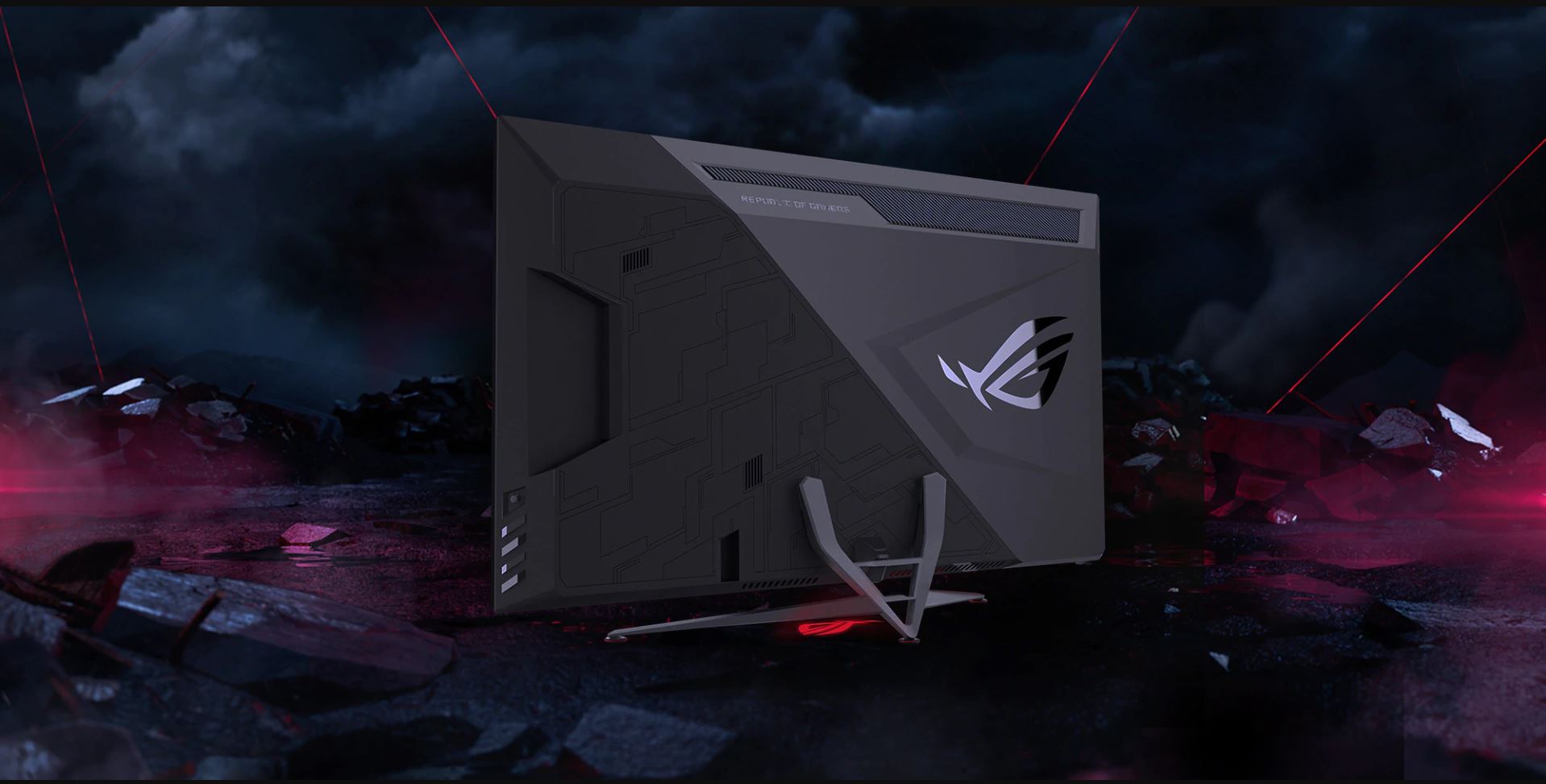From the massive 65-inch Omen X Emperium or the Space Saving Samsung monitors, so far at CES 2019, gaming and other types of monitors have been in abundance. Asus, too, is getting in on the trend and is revealing a new 43-inch ROG Strix XG438Q display alongside two new super ultrawide, HDR-friendly, high-refresh rate gaming monitors.
We begin with the massive ROG Strix XG438Q display. At 43 inches, this is being called the world’s biggest and fastest 4K Freesync 2 HDR gaming monitor. Luminance can get as high as 600 cd/m for greater contrast in gaming. That is impressive on its own, but it also packs in 3,840 x 2,160 native resolution and 120Hz refresh rate, and 90 percent DCI-P3 coverage.
More CES 2019 coverage
- All of Lenovos’ new CES monitors are ultra-fast and ultra-huge
- Tiny bezels and HDR rule our 5 best laptops of CES 2019
- HP takes PC gaming to the living room with 65-inch Omen X Emperium 65 monitor
For even more multitasking fun, it has the option to view up to three multiple sources at the same time, with a picture-in-picture mode, and an insert window mode that can divide the monitor in half. Elsewhere, there are three HDMI 2.0 inputs, a Display Port interface, USB 3.0, and 10-watt speakers on board. Pricing was not announced, but availability is scheduled for spring 2019.
Next up is the ultra-wide ROG Strix XG49VQ. Coming in at 49 inches, this monitor sports a 32:9 aspect ration and 3,840 x 1,080 resolution, with a much speedier 144 refresh rate than the ROG Strix XG438Q. It sports the same 90 percent DCI-P3 coverage and also allows you to view up to three sources at the same time. The luminance is lower, though, coming in with Vesa DisplayHDR 400 compliance. You will also find HDMI 2.0, Display Port on board. Pricing was not available at the time of press, but availability is scheduled for January.
Finally, there is the 32-inch Strix XG32V. Though a curved monitor, this is the smaller of the bunch. It comes in with a resolution of 2,560 x 1,440 and a 144Hz refresh rate, 94 percent of the DCI-P3 coverage, and 94 percent of DCI-P3 coverage with Vesa Display HDR 400 compliance. Connectivity is the same as the XG49VQ, and so is the January availability.
All three of these monitors come with support for AMD’s FreeSync2 HDR technology for stutter-free, low latency gameplay. Also supported is Asus’ “TÜV Rheinland Eye Comfort Certification” which ensures eye comfort and less flicker during gameplay. Asus also custom designed the backlights on all three monitors, for the best performance, and includes its Shadow Boost technology onboard the displays for improved visuals when gaming in the dark.
Editors' Recommendations
- IPS vs. VA displays: Which is best for your monitor or TV?
- 4 gaming monitors you should buy instead of the Alienware 34 QD-OLED
- A new wave of cheap mini-LED gaming monitors has arrived
- The ROG Ally 2 is coming. Here’s why that’s a great sign
- Why Alienware remains the undisputed champ of OLED gaming monitors




